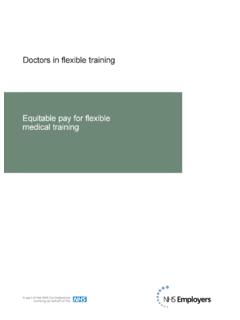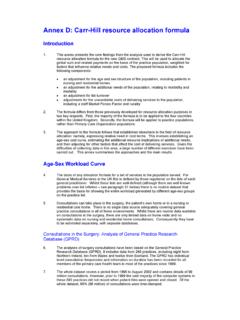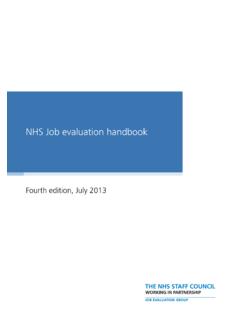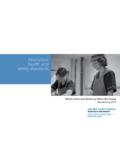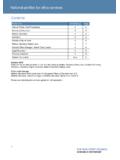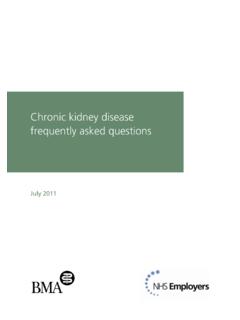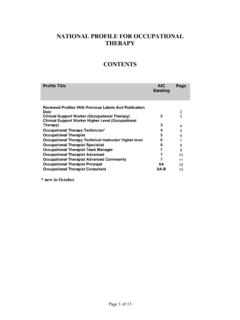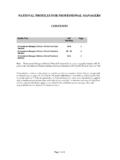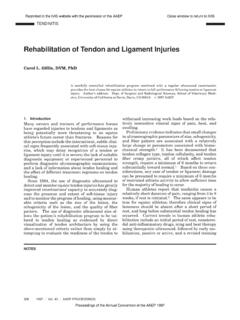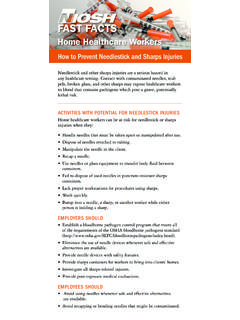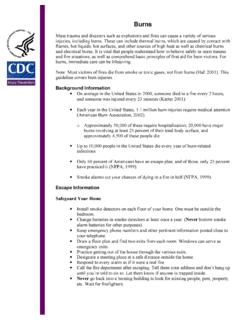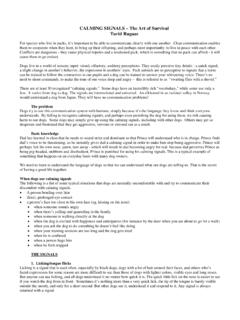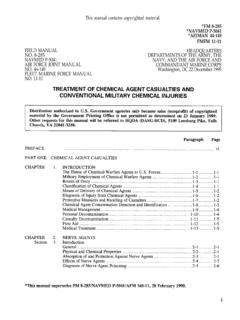Transcription of Needlestick Injury - NHS Employers
1 1 Needlestick Injury Contents: Introduction p2 Reporting incidents p3 Surveillance systems p3 The legal position p4 Section 1 Preventing Exposure p6 Employer responsibilities p6 Strategy and policy p6 Assessing the risk p6 Section 2 Managing Exposure p13 Management of blood and body fluid exposure incidents p13 Assessment of the risk of blood-borne virus (BBV) transmission p13 Relevant information to consider p14 Protocol for management of exposures p15 Approaching source patients for blood-borne virus testing p16 Managing exposures from unknown sources p18 If the source patient is infected with HIV p19 If the source patient is infected with HCV p22 If the source patient is infected with HBV p22 If the source patient is unknown or testing cannot be done p22 Preventing further incidents p23 More information p23 2 Introduction The National Audit Office report of April 2003.
2 A safer place to work improving the management of health and safety risks in NHS trusts, found that Needlestick and sharps injuries account for 17 per cent of accidents to NHS staff and are the second most common cause of Injury , behind moving and handling at 18 per cent. The major blood-borne pathogens of concern associated with Needlestick Injury are: hepatitis B virus (HBV) hepatitis C virus (HCV) human immunodeficiency virus (HIV). However, other infectious agents also have the potential for transmission through Needlestick Injury . These include: human T lymphotrophic retroviruses (HTLV I & II) hepatitis D virus (HDV or delta agent, which is activated in the presence of HBV) hepatitis G virus (GB virus or GBV-C) cytomegalovirus (CMV) Epstein Barr Virus (EBV) parvovirus B19 transfusion-transmitted virus (TTV) West Nile Virus (WNV) malarial parasites prion agents such as those associated with transmissible spongiform encephalopathies (TSE).
3 In the United Kingdom (UK), the Health Protection Agency (HPA) monitors significant occupational exposures and potential transmission of HIV, HCV and HBV from patients to healthcare workers through a national surveillance scheme. Data are reported in the Eye of the Needle report, which is regularly updated and can be accessed at When a blood or body fluid exposure incident occurs in the context of an exposure-prone procedure , the possibility of transmission of infection from healthcare worker to patient must be considered, as well as from patient to healthcare worker.
4 Exposure-prone procedures are those where there is a risk that Injury to the healthcare worker could result in the patient s blood or open body tissue being exposed to the blood of the healthcare worker. In practice these include surgery, midwifery, dentistry and physical contact with trauma patients who may have open fractures or glass-contaminated wounds. Needlestick or sharps injuries occur when a needle or other sharp instrument accidentally penetrates the skin. This is called a percutaneous Injury . If the needle or sharp instrument is contaminated with blood or other body fluid, there is the potential for transmission of infection, and when this occurs in a work context, the term occupational exposure (to blood, body fluid or blood-borne infection) is used.
5 When blood or other body fluid splashes into the eyes, nose or mouth or onto broken skin, the exposure is said to be mucocutaneous. The risk of transmission of infection is lower for mucocutaneous exposure than for percutaneous exposures but still significant. Other potential routes of exposure to blood or other body fluids include bites and scratches. The National Audit Office (NAO) report of April 2003, A safer place to work 3 improving the management of health and safety risks to staff in NHS trusts, and the subsequent Public Accounts Committee hearing, highlighted the need for the better management of Needlestick and sharps incidents in the NHS.
6 At least four UK healthcare workers are known to have died following occupationally-acquired HIV infection. By 1999, another healthcare worker was known to have been infected. Between 1996 and 2009, the Health Protection Agency received reports of seventeen healthcare workers who had been infected with hepatitis C virus due to occupational exposure. Significant stress and psychological trauma can result from Needlestick injuries, even where no infection is ultimately acquired, due to long periods of uncertainty regarding the outcome of the Injury , as well as changes in lifestyle, working restrictions and, where indicated, extended and debilitating treatments.
7 Available data suggests that the number of reported occupational exposure incidents increased by 49 per cent between 2002 and 2005, according to the HPA. However, many of these incidents could have been avoided by adopting precautions and by disposing of clinical waste This section gives guidance on what NHS Employers should do to reduce the risks of Needlestick and sharps injuries to staff. Reporting incidents One of the major problems associated with the management of Needlestick incidents, identified by the NAO in its report and confirmed by the HSE, is the lack of hard evidence relating to the actual numbers of incidents in trusts.
8 This is due to the under-reporting of exposure incidents, which some studies have identified as being as high as 85 per cent. The NAO identified data collection and record keeping, together with the monitoring of those records, as a key area that requires more work. Employers have a responsibility to ensure that there are local systems in place for reporting all Needlestick injuries. Employees should be encouraged to report exposures promptly, following local reporting arrangements (usually to the trust s occupational health service). This is important for five reasons.
9 It ensures appropriate management to reduce the risk of blood-borne virus transmission it documents the incident and the circumstances, which is essential for the subsequent investigation of occupational Injury or infection it provides accurate surveillance, so that collective data analysis can inform measures to reduce the risk of further exposures It provides data to monitor and review the effectiveness of measures introduced to reduce the risk of further exposures It allows Employers to meet their requirements to report RIDDOR dangerous occurrences to the HSE.
10 Surveillance systems All cases of occupational exposure to blood or body fluid from patients infected with HIV, hepatitis C virus or hepatitis B virus, and all incidents where post- 1 Eye of the Needle (2006), HPA 4 exposure prophylaxis (PEP) for HIV has been started (whatever the HIV status of the source), should be reported to the Health Protection Agency national surveillance scheme. The anonymity of the healthcare worker is maintained through unique identifier codes. The scheme aims to record: the numbers of healthcare workers being exposed to these viruses the circumstances contributing to occupational exposures the clinical management of those exposures, including HIV exposures and the use of PEP the side effects of HIV PEP and outcomes evaluate the introduction and effectiveness of safer devices.
